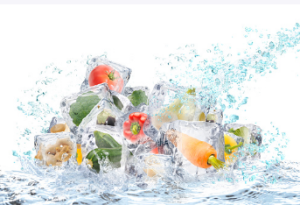Frozen food exporting can be a lucrative business for small and midsize producers. But there are certain challenges to consider. These challenges include factors affecting demand for frozen foods, infrastructural problems, and costs of exporting.
 Factors influencing the demand for frozen food
Factors influencing the demand for frozen food
Factors influencing the demand for frozen foods in developing markets include poor cold chain logistics infrastructure and increasing food acceptance by consumers in urban areas. Despite these challenges, the global market for frozen foods is estimated to grow by 5.0% CAGR over the next five years. Learn more about Markwell Foods NZ frozen food exporting.
The growing disposable income of consumers is driving the global market for frozen foods. In addition, the convenience of frozen food is another reason behind the industry’s rapid growth. Moreover, busy lifestyles have increased the demand for frozen food. Therefore, this industry will continue to grow, as the market penetration rate is likely to be high.
In developing countries, frozen foods are a viable alternative for small producers. It is because they have a long shelf life and high nutritional value. Nonetheless, they are generally perceived as less qualitative than fresh produce. It is a misconception, as many frozen foods have more nutritional value than fresh products. Consequently, this study explores consumer perceptions of frozen foods in Albania and Kosovo. It was accomplished through 380 questionnaires distributed in the two Balkan countries.
Consumers in Kosovo have a higher positive attitude toward FFs than their Albanian counterparts. In contrast, consumers in Albania are more hesitant to purchase frozen foods and are more concerned about the safety of the food supply chain.
Still, frozen food exporting is one of the best ways to expand your business. It is because many countries are willing to accept your products. These include Canada, India, and Turkey. In this article, we’ll discuss the benefits and drawbacks of exporting your frozen goods to these countries.
India
Frozen food exporting to India is an industry with huge growth potential. To tap into this market, India is pushing for increased shipments. It wants to take advantage of the rise in demand and the trust deficit China is currently facing due to a coronavirus outbreak. Many east Asian countries are looking for alternative suppliers, and India is looking to make a name for itself in the field. According to Harsimrat Kaur Badal, the minister of food processing industries, the government is facilitating local companies to take advantage of this opportunity.
Turkey
Turkey has increased its exports of frozen fruit and vegetables by 32 per cent this year, surpassing its original target of $250 million. Exports of fresh foods increased by 20 per cent, from $777 million to $936 million in January-June. The country is also looking to open up new markets in the Far East and South America.
Iran
Iran exports frozen food to several countries. Its largest suppliers are China, the United Arab Emirates, and India. These three countries account for over 80% of the total frozen fish and seafood exported to Iran. In addition, it imports a significant amount of frozen food from India and China. Learn more about Markwell Foods NZ frozen food exporting.
Canada
Canada is a major exporter of processed and frozen foods. The food industry accounts for about 4% of Canada’s merchandise trade, and the country has always been a leading exporter of food products. Before CUSTA was signed, the country’s top export product was meat, representing 31% of all exported processed food products. Since 1995, meat exports have increased by 135%, or $3 billion.
The U.S.
The U.S. imports a variety of specialty frozen foods from various countries. The top countries supplying the U.S. market include Canada, Italy, Germany, and Thailand. However, these countries also are important importers of U.S. products, and U.S. frozen food exporters should take note of this.
Bangladesh
If you’re exporting frozen food to Bangladesh, you’ll have a few challenges to overcome. One of the biggest challenges is the need for traceability requirements. In addition, there are issues with cheating and stuffing metals into packages. It can make it difficult to track your products, which could lead to delays and even fines.
Spain
The Spanish frozen food exporting industry is expanding, modernizing and creating environmentally friendly products. The key trend is increased efficiency in processes, energy and steering. For instance, Galician brewery Estrella Galicia will invest $170 million in a new facility to double its production capacity. Vegetable frozen food producer Fruveco has invested $90 million in a new plant in Murcia. Dairy producer
Lacteos Industrial Agrupados plans to invest $80 million in a dairy plant near A Coruna. Other companies, such as sausage producer Embutidos Rodriguez, are investing $25 million in new production lines. In addition, deep-frozen seafood supplier Apolo has invested $10 million in new production lines.
